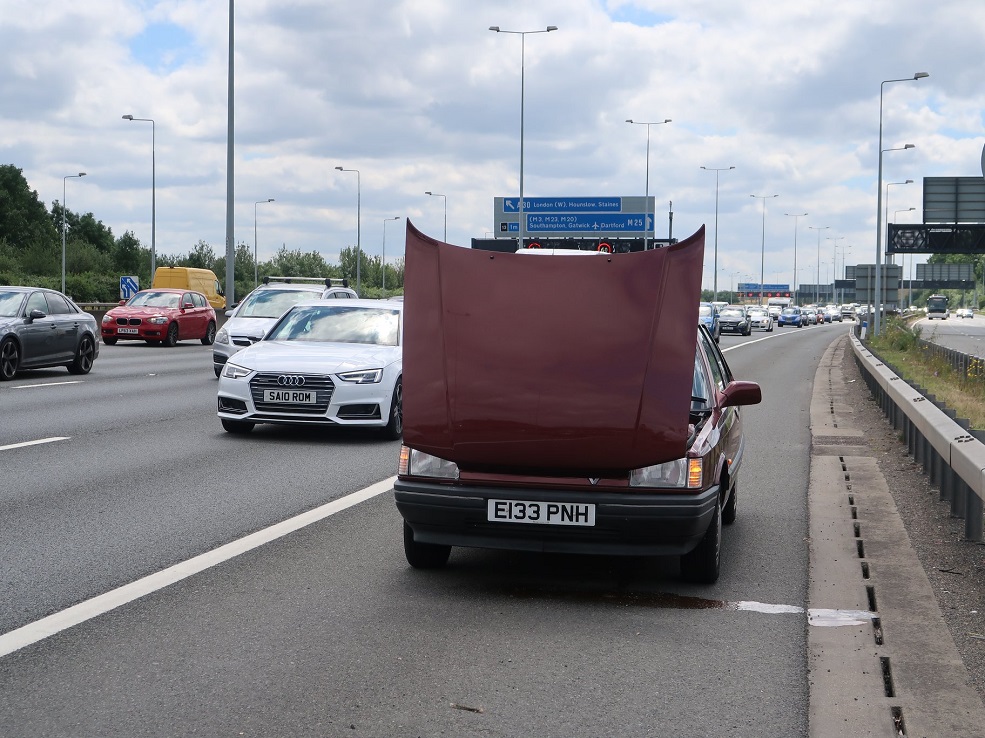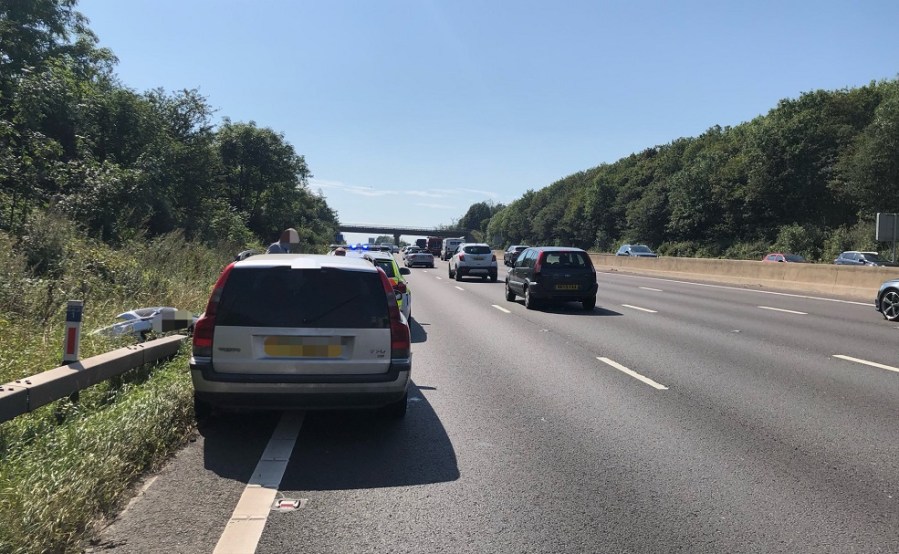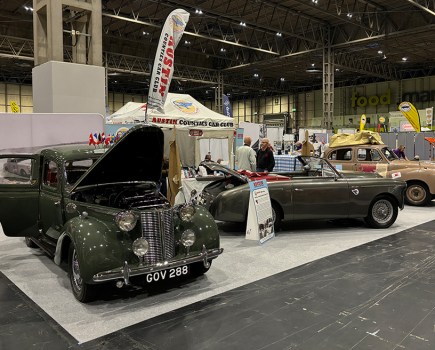Questions have once again been raised over the removal of the motorway hard shoulder following an incident where a Volvo V70 ran out of fuel in an active lane of the M1 and couldn’t be restarted, resulting in the driver being ticketed by Derbyshire Constabulary’s Roads Policing Unit for leaving the vehicle in a dangerous position. The incident was subsequently shared by the policing unit on social media, creating much discussion over the dangers of smart motorways.
When the so-called smart motorway model is employed, hard shoulders are removed or reduced in size to improve traffic flow and open more lanes up to drivers. Hard shoulders are currently used as a regular driving lane on 113 miles of motorway in England with around 400 miles of motorway converted to a smart motorway.
Critics have accused smart motorways of being expansion on the cheap, and pointed to the dangers of removing refuge areas. In the case of the stricken Volvo, the driver reportedly ran out of fuel and topped it up with his emergency can, with lorries swerving to avoid the stricken vehicle. The car then wouldn’t restart as the battery was flat, meaning it had to be towed to safety. Although running out of fuel on the motorway is an offence, it’s unlikely that traffic would have been equally disrupted had a hard shoulder been present.

While the general consensus was that the driver should’ve planned ahead to avoid running out of fuel and the ticket was therefore justified, others were more sympathetic, pointing to potential issues with faulty fuel gauges, service stations running out of fuel and a flat battery that couldn’t be planned for. The idea of a smart motorway is that the lane is closed with a red ‘X’, but judging by the police report the lane remained live for at least some time while the car was stranded.
While the fine for running out of fuel should act as a warning for other drivers to ensure their vehicles are properly prepared for motorway use, it’s a fact of life that all vehicles are susceptible to a mechanical failure – classic or not. However, age limits on certain breakdown policies and increased cost for covering a classic vehicle shows that most companies believe older cars to carry a greater risk. What’s more, hazard warning lights only became mandatory for cars first used after March 1986, and many older cars won’t have them, so alerting other motorists if you’re stranded in a live lane could be very difficult.
The idea of a smart motorway requires everyone to be alert to ensure that incidents are kept to a minimum. At this moment in time, that seems like a very dangerous assumption. While we’d would hate to see classics banned from such roads, regular inspections, maintenance and sorting any minor issue that may become an issue in future becomes more important than ever if using such roads. It also a good idea to seek wisdom from owners’ clubs and groups, which can provide valuable advice regarding procedures and upgrades to keep you classic reliable.
In light of recent reports, it is estimated that it is over 200% more dangerous to break down in a live-lane on a smart motorway than it is with a physical hard shoulder. We’ve written a story on it, be sure to check it out.








